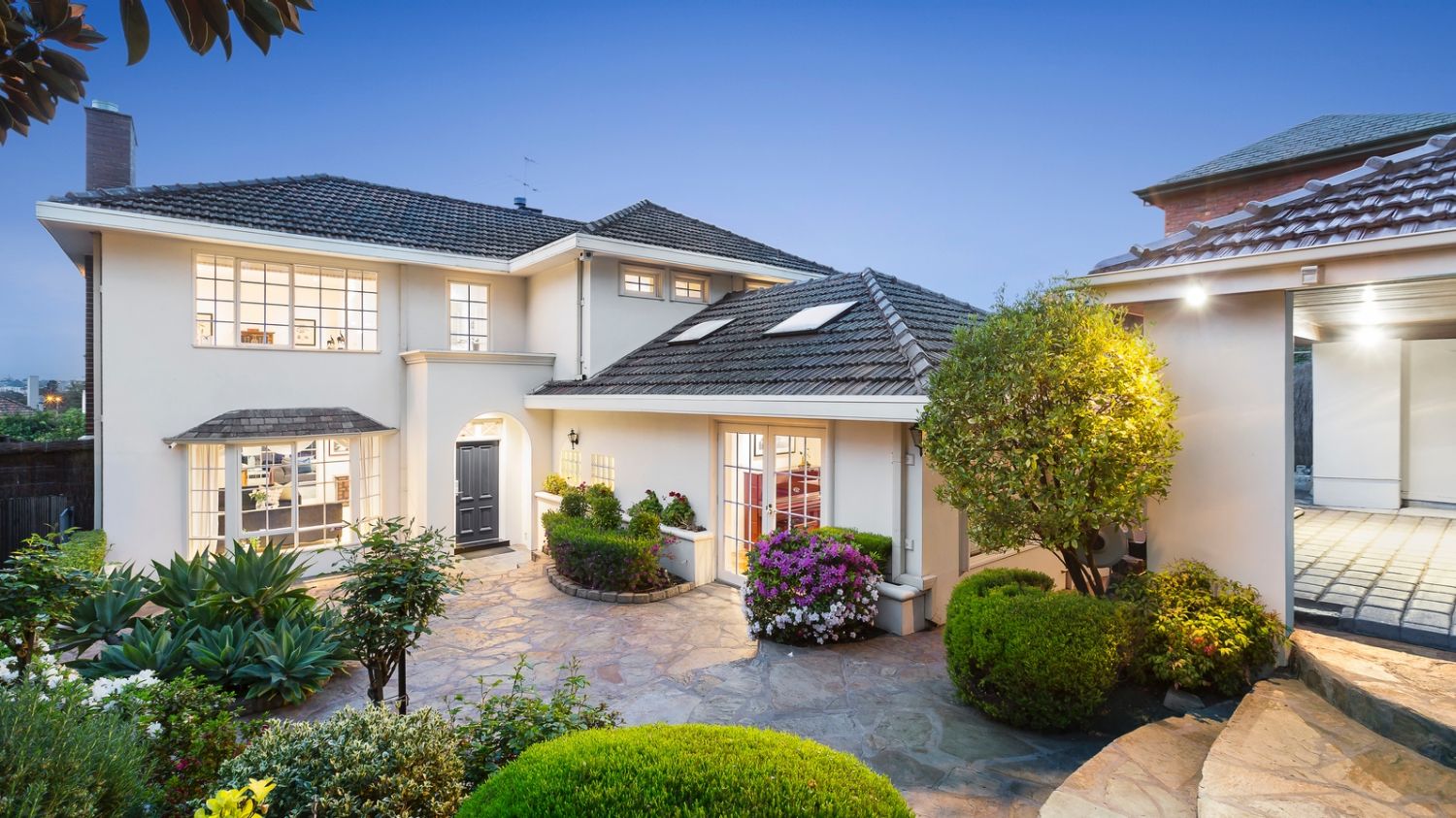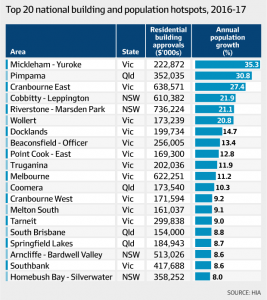Housing Industry Association’s latest list of top building growth areas has revealed that Melbourne accounted for 12 of the top 20 areas.
“Last year’s census unearthed 144,000 more residents in Melbourne than was previously known,” the report reads. Their prospects of employment arising from a building boom, increase infrastructure projects and growth in services sector are to thank for these swelling numbers.
A “hotspot” is classified as an area with a population growth rate that outpaced national growth rate in 2016-17, which was 1.6 per cent, and also had more than $150 million in approved residential building for NSW and Victoria, $100 million for Queensland and Western Australia, $50 million for South Australia, $20 million for Northern Territory and the Australian Capital Territory; and in excess of $10 million for Tasmania. Topping the list is Mickleham-Yuroke in Melbourne, Pimpama in Queensland is in second place and Cranbourne East in Melbourne’s southeast is in third.
Melbourne is likely to grow further
Shane Garrett stated that Melbourne and its surrounding areas are likely to grow many Hotspots for building activities going into 2019 with a greater number of work still to be commenced, no recession evident in approvals and population growth is better than 2 per cent. “The remarkable performance of Melbourne in this year’s Hotspots report demonstrates how well the circle of job creation, population growth and new home building can boost an economy.”
A number of suburbs in Sydney are in the pipeline of new housing, which will result in significant growth in population. Meanwhile, Queensland’s south-eastern corner, is starting to see robust employment gains. The report also highlighted areas that which are likely to return to the hotspot list, including Brisbane CBD and Melbourne CBD, both with oversupply of apartments. It also earmarked 38 places in Victoria, 13 in NSW, 4 in the ACT, and 3 in Queensland which are expected to experience strong population and building activity growth soon. Construction commenced for detached house in the 2017 is only 2.9 per cent lower than 2016, meanwhile the apartment market is also better than expected.
The improved outlook for economic growth domestically has pushed the anticipated downturn in residential building further out along the forecast horizon. HIA says, “This is reflected in a stronger outlook for home building activity over the year ahead.” Indeed, Melbourne is home to a majority of Australia’s fastest-growing suburbs and out-performing all other cities on potential growth rates. This is an indication that local housing markets in Melbourne is moving forward in a steady pace.
To learn more information about local housing markets, feel free to book in a free strategy session today.
For more information: https://www.therealestateconversation.com.au/news/2018/06/13/melbourne-dominates-australias-housing-hotspots-list/1528849015


